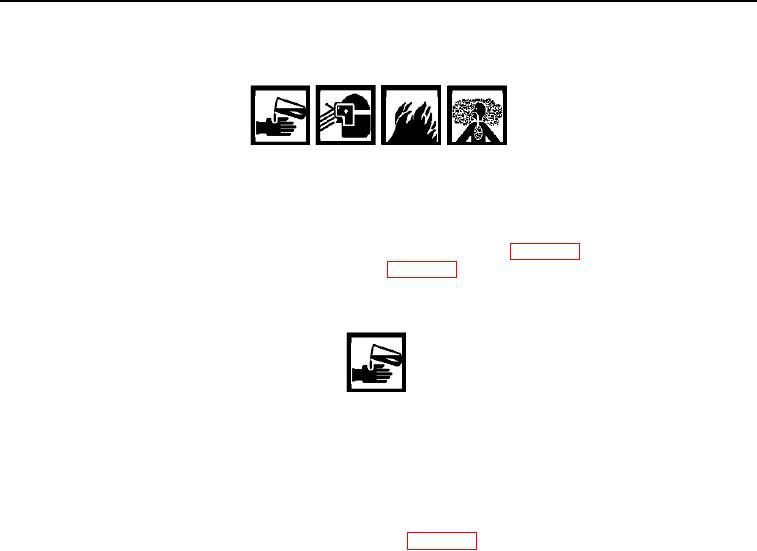
TM 5-3805-292-10
0019
GENERAL PMCS PROCEDURES CONTINUED
WARNING
Solvent cleaning compound MIL-PRF-680 Type III is an environmentally compliant and
low-toxicity material. However, it may be irritating to the eyes and skin. Use protective
gloves and goggles. Use in well-ventilated areas. Keep away from open flames and other
sources of ignition. Failure to do so may result in injury or death to personnel.
a. Keep It Clean. Dirt, grease, oil, and debris get in the way and may cover up a serious problem. Clean as
you work and as needed. Use Cleaning Compound, Solvent, Type III (WP 0033, Item 2) on all metal
surfaces. Use Detergent, General Purpose, Liquid (WP 0033, Item 4) and water when you clean rubber,
plastic, and painted surfaces.
WARNING
When servicing this equipment, performing maintenance, or disposing of materials such
as engine/hydraulic oil, engine coolant, fuel, battery acids, batteries, windshield cleaning
compound, and CARC paint, consult your unit/local hazardous waste disposal center or
safety office for local regulatory guidance.
b. Hazardous Waste Disposal. Ensure all spills are cleaned up IAW spill containment plan and disposed of
IAW using unit's SOP.
Rust and Corrosion. Check metal parts for rust and corrosion. If any bare metal or corrosion exists, clean
c.
and apply a light coat of Oil, Lubricating, OE/HDO-10 (WP 0033, Item 8).
d. Bolts, Nuts, and Screws. Check bolts, nuts, and screws for obvious looseness, missing, bent, or broken
condition. You can't try them all with a tool, but look for chipped paint, bare metal, or rust around bolt
heads. If you find one is loose, tighten it.
e. Welds. Look for loose or chipped paint, rust, or gaps where parts are welded together. If you find a bad
weld, report it to your supervisor.
Electrical Wires, Harnesses, and Connectors. Look for cracked or broken insulation, bare wires, and
f.
loose or broken connectors. Tighten loose connectors. Ensure wires are in good condition. Notify Field
Maintenance if wires are disconnected.
g. Hoses and Fluid Lines. Look for wear, damage, and signs of leaks. Check for loose clamps and fittings.
Wet spots indicate leaks, but a stain around a fitting or connector can also mean a leak. If a leak comes
from a loose fitting or connector, notify your supervisor. If something is broken or worn out, report it to your
supervisor.
0019-3

